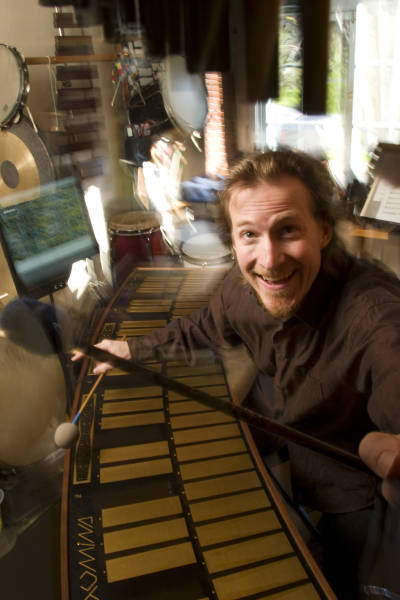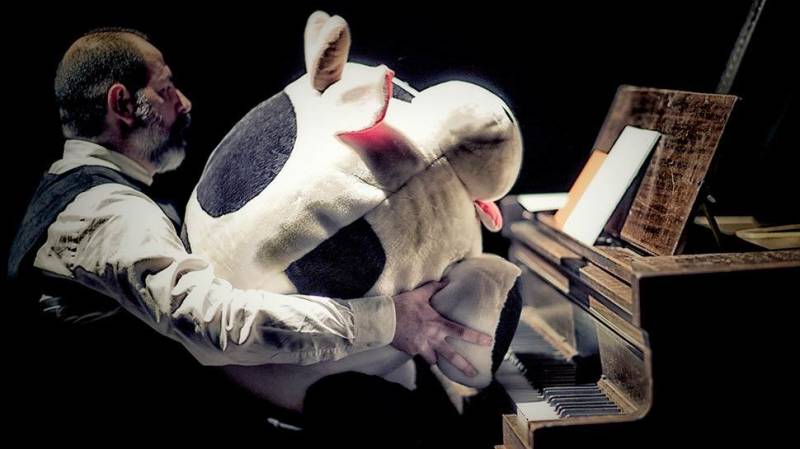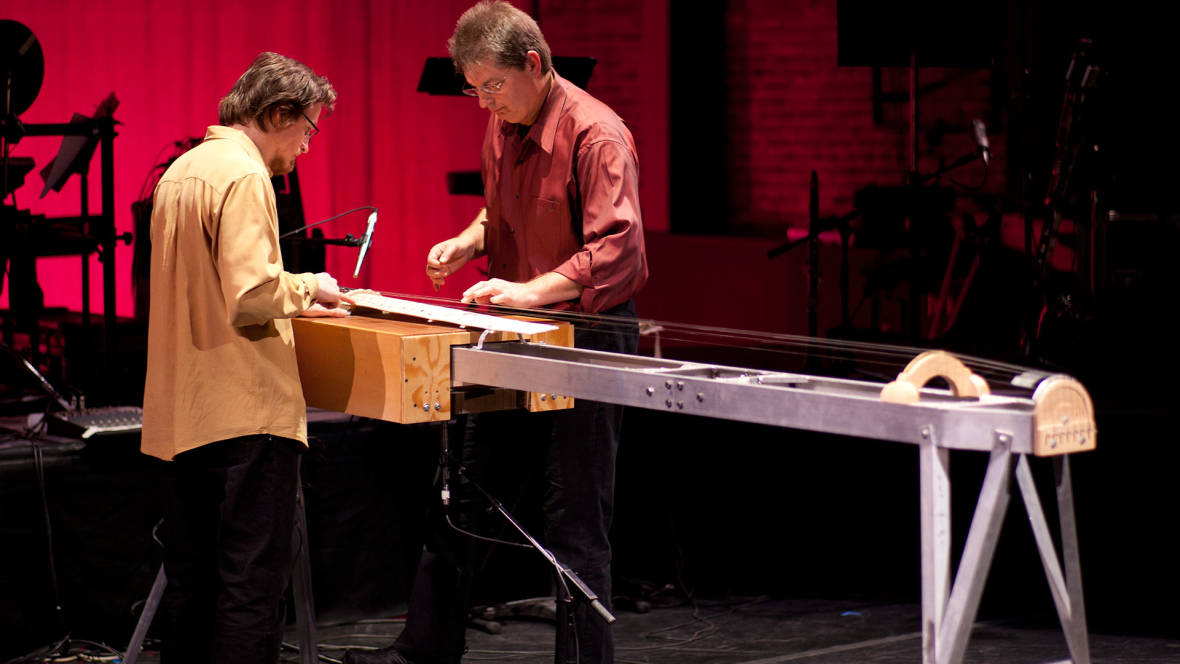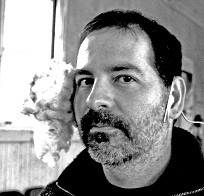What would it sound like if every Maker Faire turned into a jam session, with music designed for bands of newly minted instruments? If you live in the Bay Area, you’re in the right place to discover the answer. California-based players and composers have been in the instrument-building and altering vanguard since Harry Partch started exploring just intonation in the 1920s, and two upcoming events feature some of the most inventive performers on the contemporary scene.
On April 21, the Berkeley Art Museum/Pacific Film Archive presents “Full: Invent” with Joel Davel on Marimba Lumina and Paul Dresher on the 14-foot single-string Quadrachord. (The triple bill also features Edward Schocker on his updated version of the glass harmonica and multi-instrumentalist Laura Inserra, who specializes on the hang, a Swiss-built metal percussion instrument that resembles Hollywood’s notion of a UFO, circa 1955.)
Together in the aptly named Invented Instrument Duo, Dresher and Davel’s collaboration represents two distinct (and overlapping) approaches to creating new instruments. Dresher started as a guitarist and became intrigued by the physics of long strings. Working with Daniel Schmidt, he built the Quadrachord, which has become a primary compositional vehicle.
“Composers are always looking for new sounds and new ways to create sound,” Dresher says. “But even if you find something new, you have to make music from it that operates on time-honored criteria. A cool sound won’t hold up for a concert. You need to create a more elaborate musical statement that hopefully makes sense with a formal development and shape.”

The BAM/PFA program also features Dresher’s most extensive performance yet on the Hurdy Grande, a recent creation with Schmidt that employs a hand-cranked mechanical wheel driving a bow, like a hurdy gurdy with nine-foot strings. “I knew from the Quadrachord, when strings get long, a different physics of sound [becomes] possible,” Dresher says. “I had to discover new playing techniques. It sounds like a bowed string instrument, but it does many things that bowed string instruments can’t do.”




